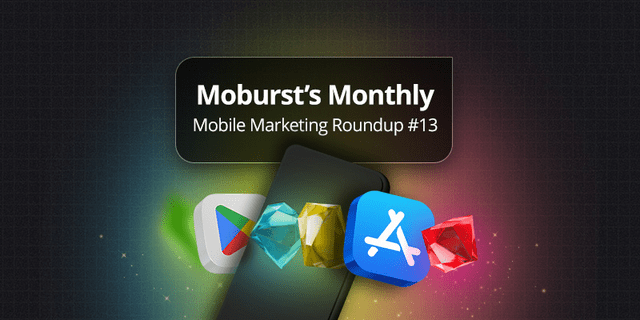
There’s nothing more satisfying than looking at reports of your app’s ad performance, and seeing a lovely number followed by many zeros, telling you that many people saw your app, downloaded it and converted to paying users. You feel that the only thing left for you to do is to pick the color of your Ferrari.
But wait! How do you know these numbers are real? Did these users actually download your app through mobile ads, or is this number a result of ad fraud, trying to overbill you for non-real users and downloads?
First Things First
The advertising world slowly moves from billboards to TV, computer screens and now mobile devices, to a point that the global mobile advertising market share is close to 71%, and will soon surpass it. Mobile advertisers pay mobile marketing and advertising agencies to market their app, and one of the ways to do so is via Media Buying, meaning running mobile ads through ad networks, RTBs, exchanges and direct publishers. While some advertising venues such as Facebook and Google are better at preventing fraud, many others are not capable, or even willing, to try and prevent this.
App downloads and revenues hit new record levels in the third quarter of 2017, according to an App Annie report. Downloads across the two major app stores, Apple’s App Store and Google Play, reached nearly 26 billion worldwide – an 8% increase over the same period in 2016. That figure doesn’t include re-installs or app updates, only new downloads. In addition, app revenue reached a record of nearly $17 billion, App Annie said.
In other words, it paints a picture of the app economy’s true growth with new users. Fraudsters naturally relish on the opportunities that this lucrative market can provide them, and indeed their activity, sadly, is growing as well.
DataVisor report claims that around 15% of app installs are false, performed by scammers. If you want to translate it to money, it equals to approximately $300,000,000 wasted annually. Furthermore, with time we see that these scammers get smarter and employ new methods, which makes it more difficult to find and stop them.
What do Advertisers Say?
Until recently not much. In 2017, however, P&G set new rules for agencies and ad techs to get paid, and raised the bar for the whole industry. As the mobile marketing industry matures, we’re seeing more and more advertisers getting smarter and use more sophisticated tools to track detect and prevent mobile ad fraud.
An ongoing campaign is never “done”. Once it goes live it requires constant nurturing, monitoring, updating and follow-ups. In order to avoid frauds, one needs to continuously check his or hers advertising channels, while simultaneously scan for new ones.
Let’s Look Deeper Into it…
While there are several types of frauds, we will focus on install frauds, as it’s the most common type between Advertisers and Ad networks.
- Device Based Fraud: Using the same device to re-install apps over and over again. The method is rather simple – downloading the app, then resetting the device’s ID and repeating this process as many times as they want. This fraud will be identified with a lot of activity from new devices, unknown to the tracking provider (we highly recommend AppsFlyer’s DeviceRank).
- Click Flooding: These scammers generate an abundance of clicks, and try to tie them to an organic source. Such clicks are, in fact, fraudulent, and are stealing real organic traffic, and mispresent a picture of quality users.
- Install Hijacking: Hiding behind innocent apps, ads, websites and more, install hijackers implement malware within innocent phones (mostly Android), to track app downloads and tag them as non-organic and low quality. The way to detect these scams is the Click to Install Time (CTIT), as it usually takes 30 seconds to install as app, however install hijacking take about 10 seconds.
While talking about these types of frauds, it’s worth mentioning that Android devices are 5 times more used for fraud than iOS phones. New versions of both phones are usually less likely to get hacked, as both Apple and Google are constantly updating their Operating Systems and App stores in order to fight fraud.
An example for a campaign overcoming such frauds can be found in our media campaign for the Gett app, which offers quick and easy taxi services in prime locations around the world. Using Moburst’s advanced tools and knowledge, we reduced the frauds from 20% (!!) in some countries, to less than 3% at most in only 6 months.
Already at the earliest stages of the campaign we detected the frauds; most of them were click floods, and many others were install hijacking, with a majority of frauds done on Android devices. We carefully checked each publisher, removed the problematic ones while always searching for new publishing channels, in order to reach our common ROAS goals – which of course we did.
How to Avoid Fraud and be Confident with Your Publishers?
As we live in an imperfect world, scammers will never persist to exist and find new and devious ways to make money out of your success. So while you might not be able to eliminate fraud altogether, here are several steps you can take to try to stay on top of things:
- The first key is awareness. If you know it’s a threat – you’ll be able to face it and hopefully win!
- Keep an eye on your campaigns. NEVER let it rest without you monitoring it, and for the slightest hint of suspicious activity – it’s up to you to strike back.
- For high volume campaigns, use anti-fraud software and platforms to minimize your exposure to such cons.
Before starting a campaign, it is essential for both the advertiser and the agency/partner to set clear and reasonable thresholds for each category – clicks, CTIT, % of new devices etc. These should be agreed on both sides from the beginning as there aren’t clear industry benchmarks, especially as metrics differ from app to app and between verticals. Therefore fraud thresholds should be determined based on analyzing past user behavior of “real users”, e.g. organic and/or high quality media sources such as Facebook, Google and Apple search ads.
We wish you a fraud-free year!








